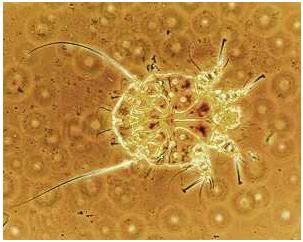We have probably all seen a dog afflicted with mange at some point in our lives. Mange is known as Demodicosis in dogs. The Demodex mite causes this itchy inflammatory disease and the identification of the particular mite can ascertain the harshness of the mange.
There are several side effects of mange again, depending on the type of mite inhibiting the hair follicles and skin. Mange can cause genetic disorders; immune system problems and lesions just to name a few. Mange is not only a condition known to affect dogs but cats as well.
There are two forms of Demodectic mange that can affect your pet. Localized will effect a specific area whereas generalized will be in many places over the entire body. Once the vet determines which type of demodectic mange your dog has, proper treatment will be determined.
Localized mange is the mild form typically appearing around the dog's trunk, legs or face with small patches of lesions. Generalized mange is mostly over the entire body in the form of patches of lesions accompanied by redness of the skin. There is no known cause for mange but some doctors believe that problems with the dogs immune system might predispose a dog or cat to this condition.
It is believed that one form of mite can be transferred from the mother to the baby via nursing. There are to other forms of mites and it is not yet known how those mites are transferred. Demodex canis gets into the hair follicle of the pet causing this transmission during nursing.
Testing is done either with a urine sample if you are able to get one or by scraping a piece of the dogs skin. The vet will want to rule out that possibility of your dog having an infected hair follicle. They can also determine the mite by plucking a few hairs.
Generalized mange can be the hardest to cure. You have the option of the lime-sulphur dip and continuous medication, which should alleviate some of the discomfort. In the more severe cases, it should be ascertained what type of life the dog will have to endure with this chronic condition, then determine the best solution for your dog.
Remember that if your dog is diagnosed with mange, you will need to continue to monitor the condition. If your pet requires treatment, you must continue to test skin scrapings for the presence of mites. As with generalized cases, medication must be administered regularly and continuously in order to control the spread of mange.
Remember that if your pet has generalized mange, it's best that you not breed it. Prevention can be simply maintaining a healthy diet for your dog. Regular grooming and good health may be all you need to keep your dog free of mange.
There are several side effects of mange again, depending on the type of mite inhibiting the hair follicles and skin. Mange can cause genetic disorders; immune system problems and lesions just to name a few. Mange is not only a condition known to affect dogs but cats as well.
There are two forms of Demodectic mange that can affect your pet. Localized will effect a specific area whereas generalized will be in many places over the entire body. Once the vet determines which type of demodectic mange your dog has, proper treatment will be determined.
Localized mange is the mild form typically appearing around the dog's trunk, legs or face with small patches of lesions. Generalized mange is mostly over the entire body in the form of patches of lesions accompanied by redness of the skin. There is no known cause for mange but some doctors believe that problems with the dogs immune system might predispose a dog or cat to this condition.
It is believed that one form of mite can be transferred from the mother to the baby via nursing. There are to other forms of mites and it is not yet known how those mites are transferred. Demodex canis gets into the hair follicle of the pet causing this transmission during nursing.
Testing is done either with a urine sample if you are able to get one or by scraping a piece of the dogs skin. The vet will want to rule out that possibility of your dog having an infected hair follicle. They can also determine the mite by plucking a few hairs.
Generalized mange can be the hardest to cure. You have the option of the lime-sulphur dip and continuous medication, which should alleviate some of the discomfort. In the more severe cases, it should be ascertained what type of life the dog will have to endure with this chronic condition, then determine the best solution for your dog.
Remember that if your dog is diagnosed with mange, you will need to continue to monitor the condition. If your pet requires treatment, you must continue to test skin scrapings for the presence of mites. As with generalized cases, medication must be administered regularly and continuously in order to control the spread of mange.
Remember that if your pet has generalized mange, it's best that you not breed it. Prevention can be simply maintaining a healthy diet for your dog. Regular grooming and good health may be all you need to keep your dog free of mange.
About the Author:
Have an Animal that you Love? Check out Catherine's recommended Pet Supplies for Dogs online store that uses nature's best ingredients. They have the most wonderful Natural Organic Dog Shampoos available.

No comments:
Post a Comment